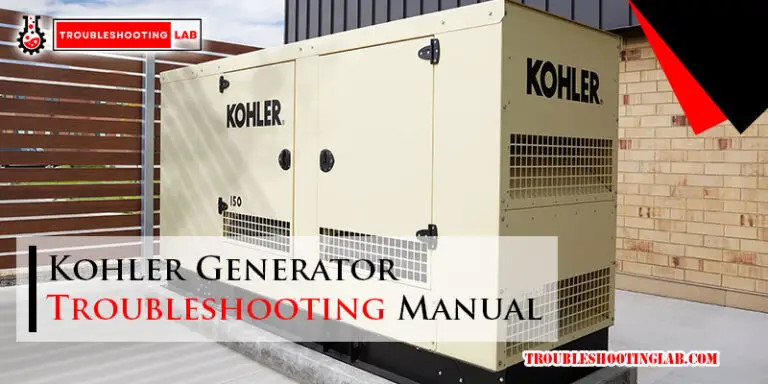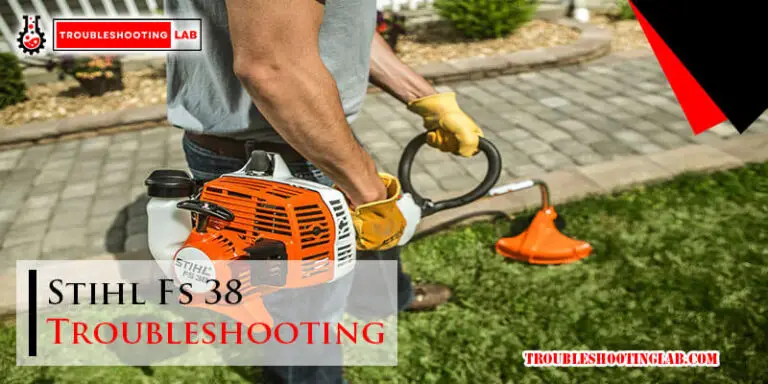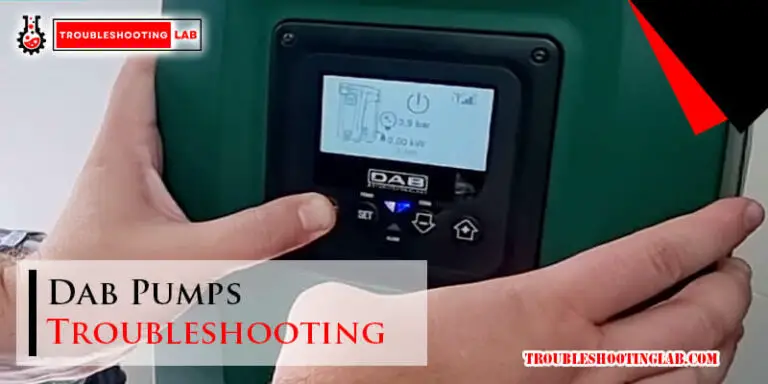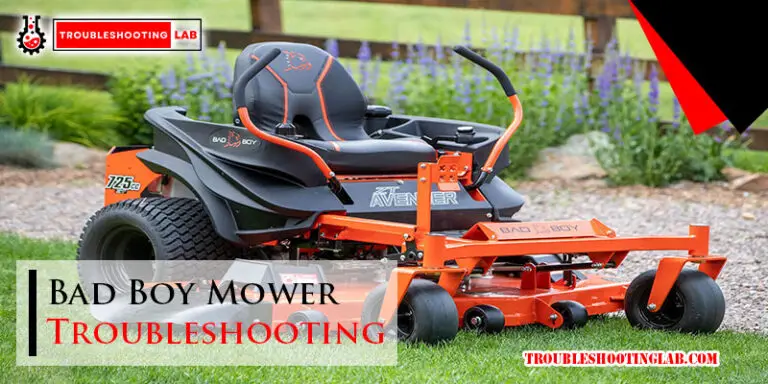Weed Trimmer Troubleshooting: Quick Fixes and Tips
Are you frustrated with your weed trimmer acting up just when you need it the most? You’re not alone.
Many people face challenges with their equipment, and it can feel like your yard work will never end. But don’t worry, there’s a solution. Imagine the satisfaction of effortlessly trimming your garden and maintaining a neat lawn without the usual hiccups.
In this guide, we’ll dive into simple and effective troubleshooting tips that empower you to tackle common weed trimmer issues head-on. You’ll discover quick fixes and preventative measures that save you time and keep your trimmer running smoothly. Get ready to transform your yard maintenance routine into a hassle-free experience. Keep reading to ensure your weed trimmer is always ready to deliver top-notch performance.
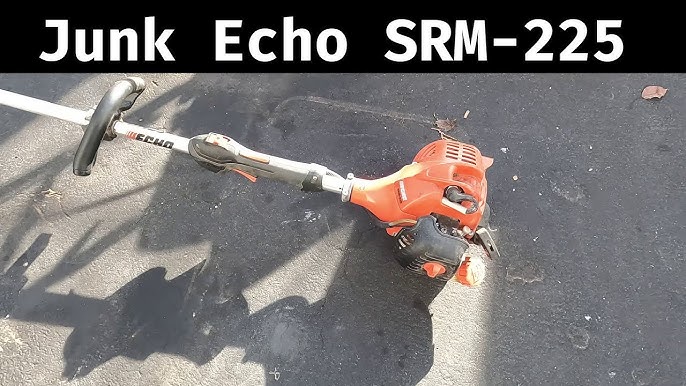
Credit: www.youtube.com
Common Problems
Weed trimmer troubleshooting often involves dealing with common issues like tangled line, engine sputtering, or uneven trimming. Regular maintenance and checking for obstructions can help ensure smooth operation. Adjusting the line length and cleaning the trimmer head might solve many typical problems.
When your weed trimmer starts acting up, it can be quite frustrating. Knowing the common problems can save you time and hassle. Let’s dive into some typical issues that might be plaguing your trimmer and explore how you can fix them effectively.Engine Won’t Start
There’s nothing more annoying than a trimmer that refuses to start. This problem might occur due to a lack of fuel or a clogged air filter. Check the fuel tank to ensure it’s not empty or filled with old fuel. Sometimes, the spark plug might be the culprit. Examine it for any visible damage and replace it if necessary. Remember, keeping your trimmer clean and well-maintained can prevent many starting issues.String Feed Issues
Ever found your trimmer’s string not feeding properly? It’s a common headache. One cause could be an improper string installation. Ensure the string is wound correctly and not too tight. The string might also break frequently if it’s too thin or of low quality. Consider using a thicker, more durable string. Check the spool and make sure it’s not stuck. A quick clean-up can often solve the problem.Engine Overheating
Have you noticed your trimmer getting too hot to handle? Overheating can be a serious issue. It might be due to debris blocking the air intake or an overworked engine. Regularly clean the air vents to allow for proper airflow. Another thing to check is the oil level, if your trimmer requires oil. Low or old oil can cause the engine to overheat. Keep an eye on it and refill or change as needed. Have you considered taking breaks to let the engine cool down during extended use? By understanding these common problems, you can keep your weed trimmer running smoothly. What tips or tricks have you found helpful in maintaining your trimmer?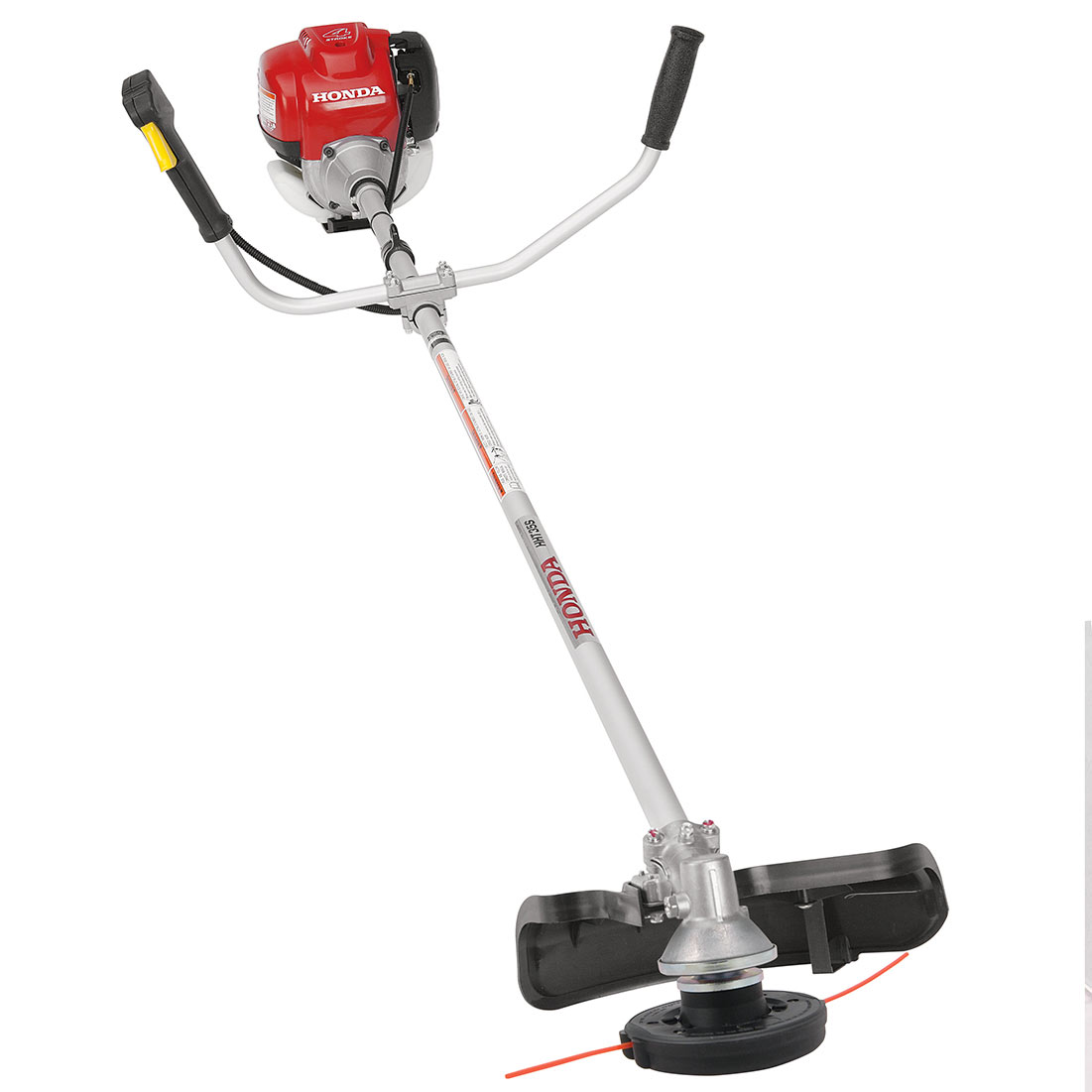
Credit: blog.hondalawnparts.com
Fixing Starting Problems
Is your weed trimmer refusing to start just when you need it most? You’re not alone. Starting problems can frustrate even the most seasoned gardeners. But before you consider tossing it out, there are simple troubleshooting steps that might save your day and your trimmer. Let’s dive into the essentials of fixing those stubborn starting problems.
Checking Fuel And Oil Levels
One of the first things to check is the fuel and oil levels. Ensure your trimmer has enough fuel. Sometimes, empty tanks can sneak up on you. Is the fuel fresh? Old fuel can lose its effectiveness. If it’s been sitting for months, consider replacing it.
Don’t forget the oil. An oil check is crucial for engine health. A low oil level can prevent starting, and worse, damage the engine. Keep a regular check on these levels to avoid unexpected issues.
Spark Plug Inspection
A faulty spark plug is a common culprit in starting problems. Pull out the spark plug and inspect it. Is it dirty or worn out? A simple cleaning or replacement might be the solution. You might want to keep a spare spark plug handy for emergencies.
Remember, a clean spark plug can make all the difference. Ensure it’s properly connected and not damaged. This small piece plays a big role in firing up your trimmer.
Air Filter Cleaning
Have you ever thought about your air filter? A clogged air filter can suffocate your engine. It prevents the right amount of air from mixing with the fuel, making starting difficult. Regular cleaning can keep this problem at bay.
Carefully remove the air filter and clean it. Are you unsure how often to clean it? Check your trimmer’s manual. A clean air filter ensures your engine breathes easy and starts smoothly.
How often do you perform these checks? Regular maintenance can save you time and money. So, next time your weed trimmer acts up, revisit these steps. Who knows, you might just solve the problem without professional help.
Resolving String Issues
Are you tired of dealing with string issues in your weed trimmer? You’re not alone. Many people face challenges with string replacement, tension adjustment, and jams while trying to keep their lawns neat. Let’s dive into practical ways to resolve these common problems and get your trimmer back in top shape. With a bit of know-how, you can avoid frustration and keep your garden looking its best.
String Replacement
Replacing the string in your weed trimmer can feel like a puzzle. Start by checking your trimmer’s manual for the right string size. Using the wrong size can lead to more issues down the road.
Once you have the correct string, unwind the old string from the spool. Take your time and ensure it’s completely removed to avoid tangling later. Next, carefully wind the new string onto the spool, following the direction indicated. Secure it firmly to prevent it from slipping during use.
Have you ever replaced a string only to find it doesn’t work properly? Double-check the string’s path through the trimmer head. Proper alignment is crucial for smooth operation.
Adjusting String Tension
String tension affects how well your trimmer performs. Too tight, and it might snap. Too loose, and it won’t cut efficiently. Finding the right balance is key.
Begin by assessing the tension as you install the string. It should be taut but not overly stretched. Test it by pulling gently; it should resist without snapping.
If you’re struggling with tension, consider adjusting the spool’s settings. Some trimmers have tension adjustment knobs. A slight turn can make a big difference in performance.
Dealing With Jammed String
Jammed string can halt your gardening plans. First, power off the trimmer for safety. Then, inspect the spool and head for any visible tangles or debris.
Carefully unravel the jammed string, using gentle movements to avoid damage. If the string is stuck, consider cutting it free and starting anew.
Regular cleaning can prevent jams. Dirt and grass can accumulate and cause blockages. By cleaning the trimmer head after each use, you reduce the risk of future jams.
Have you ever wondered why jams happen more often after replacing the string? It could be due to improper winding or tension issues. Addressing these can save you time and hassle.
Remember, troubleshooting string issues doesn’t have to be daunting. With these actionable tips, you can maintain your weed trimmer efficiently. What other maintenance challenges do you face with your gardening tools? Share your experiences and solutions in the comments below.
Addressing Engine Overheating
Experiencing engine overheating in a weed trimmer? Ensure proper air circulation by cleaning any debris blocking vents. Regularly check and maintain oil levels to prevent heat buildup.
Addressing engine overheating in weed trimmers is crucial for performance. Overheating can damage the engine and reduce lifespan. Regular maintenance helps prevent this common issue. Here, we’ll explore key areas to focus on for effective troubleshooting.Cooling System Maintenance
A weed trimmer’s cooling system must work well. Ensure air vents are clean and unobstructed. Debris can block airflow, causing overheating. Periodically check for grass and dirt buildup. Use a brush or compressed air to clear vents. Proper airflow maintains engine temperature.Proper Fuel Mixture
Using the right fuel mix is vital. Always follow the manufacturer’s instructions. Incorrect mixtures can lead to engine overheating. Too much oil clogs the engine, too little causes friction. Measure accurately for the best results. Good fuel keeps the engine cool and efficient.Inspecting Exhaust System
Check the exhaust system regularly. Blocked exhausts trap heat inside the engine. Look for carbon buildup or obstructions. Clean or replace exhaust parts if needed. A clear exhaust keeps the engine running smoothly. This prevents overheating and extends trimmer life.Maintenance Tips
Maintaining your weed trimmer is crucial for its longevity and performance. Regular upkeep helps prevent issues and ensures smooth operation. Below are some essential maintenance tips to keep your trimmer running efficiently.
Regular Cleaning
Clean your trimmer after every use. Remove grass clippings and debris from the blades and vents. This prevents blockages and overheating. Use a brush or cloth for effective cleaning.
Proper Storage
Store your trimmer in a dry, cool place. Avoid direct sunlight and moisture. Hang it on a wall or place it in a shed. This protects it from damage and rust.
Routine Inspections
Inspect your trimmer regularly. Check the blades for sharpness and wear. Examine the engine and fuel lines for leaks. Replace worn parts promptly. Regular inspections help identify problems early.
Choosing The Right Trimmer
Finding the best weed trimmer can save you time and effort. The right choice depends on your needs and lawn size. Understand the differences between models before making a decision.
Some trimmers are better suited for large lawns. Others work best for small yards. Consider the features and power options available.
Gas Vs. Electric Models
Gas trimmers are powerful and ideal for tough weeds. They work well in large areas. They are heavier and need regular maintenance. Refueling can be a hassle.
Electric trimmers are lighter and quieter. They are easy to start and maintain. Corded models need a power outlet nearby. Battery models offer freedom but need recharging.
Considerations For Different Lawn Sizes
Small lawns require less power. An electric trimmer is sufficient. It offers ease of use and simple storage.
Large lawns need more robust solutions. A gas trimmer provides the power needed for extensive areas. The choice impacts your trimming efficiency.
Consider your lawn’s size and your budget. The right trimmer makes yard work simpler and more enjoyable.
Safety Tips
When tackling weed trimmer issues, ensuring your safety should be your top priority. While it might be tempting to just dive into fixing your trimmer, taking a moment to consider safety can save you from potential hazards. Let’s break down some critical safety tips to keep you protected and confident during your troubleshooting journey.
Proper Gear
Wearing the right gear is your first line of defense. Always equip yourself with sturdy gloves to protect your hands from sharp blades and debris. Consider investing in safety goggles. A small stone or twig can fly up unexpectedly, and you don’t want to risk an eye injury.
Long sleeves and pants can shield your skin from the sun and any flying bits of grass or weeds. Proper footwear is crucial too. A pair of closed-toe shoes can prevent any accidental cuts or bruises.
Safe Operation Practices
Before you start troubleshooting, ensure your trimmer is off and unplugged. It may sound obvious, but many accidents happen due to overlooked steps. Double-check to avoid any unexpected startups.
Keep your workspace clear. You don’t want to trip over tools or wires while focusing on the trimmer. A clutter-free area reduces risks and makes the process smoother.
Do you have kids or pets around? Make sure they are at a safe distance. It’s easy to get distracted, but keeping them away ensures everyone’s safety.
Remember, safety isn’t just about gear or practices. It’s about a mindset. Every time you pick up a tool, ask yourself: am I protecting myself effectively? This question can guide you to smarter, safer decisions.
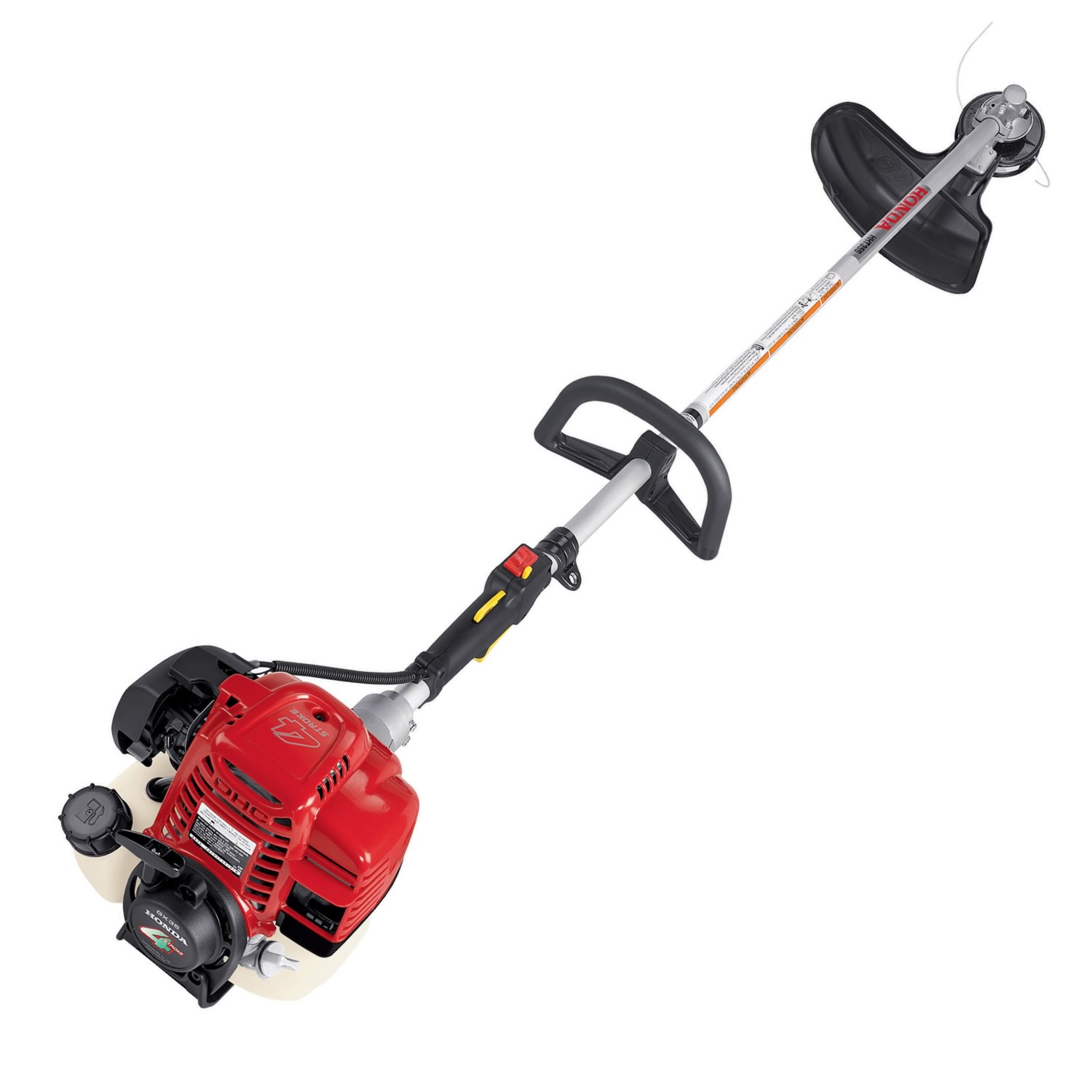
Credit: blog.hondalawnparts.com
Frequently Asked Questions
How Do I Fix A Trimmer That Won’t Start?
Check the spark plug. Clean or replace it. Ensure fuel is fresh. Inspect the air filter for clogs.
Why Does My Weed Trimmer Stall During Use?
Inspect the fuel lines for blockages. Clean the carburetor. Check the air filter. Ensure proper fuel mixture.
What Causes A Trimmer Line To Break Frequently?
Line may be too thin. Replace with thicker line. Avoid cutting heavy weeds. Check for debris around the head.
How Can I Stop My Trimmer From Vibrating?
Check for loose parts. Tighten screws. Inspect the shaft for bends. Replace damaged parts.
Why Is My Trimmer Line Not Feeding?
Inspect the spool for jams. Ensure line is wound correctly. Clean the trimmer head. Use the correct line size.
Conclusion
Fixing a weed trimmer can be simple with the right steps. Always check for common issues like fuel problems or clogged parts. Keep your trimmer clean and well-maintained. This helps prevent many common problems. Remember, safety first. Wear protective gear when working on your trimmer.
If issues persist, consult a professional. Sometimes, expert help can save time and frustration. Regular maintenance is key. This keeps your weed trimmer running smoothly. Thanks for reading, and happy trimming!

